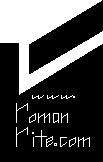Liturgy Lines
This week's edition of Brisbane's newspaper The Catholic Leader informs me of a website: www.litcom.net.au
It has articles since 1999 about the liturgy by Elizabeth Harrington called Liturgy Lines. They have the generous note: "They may be reproduced by parishes for private non-commercial use, provided that the copyright line is retained."
Generally I have found the articles to be interesting and informative.
But here are some flaws I have noticed.
In the article "Blessings" of 18 January 2004 she wrote:
"Judging by the number of phone calls I receive from people seeking help with preparing a service of blessing, one of the church’s best-kept secrets is the official ritual book entitled Book of Blessings. This book was promulgated in Latin as De Benedictionibus in 1984. It was then translated into English by ICEL. The edition published in the USA in 1989 is the one that has been approved for use in Australia."
Who approved use of a USA edition for Australia? When did they do it? I have searched for approval from the Vatican and I have not been able to find it. I suspect this is why it has been a secret in Australia, there is not an approved translation.
In "The Apostles' Creed" of 23 November 2003 she presents a version different from the approved one in the Rite of Christian Initation of Adults.
She has: "... I believe in Jesus Christ, God's only Son, our Lord, who was conceived by the Holy Spirit, ...".
I believe the approved translation is: "... I believe in Jesus Christ, his only Son, our Lord. He was conceived by the power of the Holy Spirit ..." (from Catholic Worship Book, n. 37 and The Rite of Christian Initation of Adults, published by E.J. Dwyer, Sydney, 1987, page 110, n. 183/199).
The article of 31 August 2003 answers the following question:
"Do the readers genuflect to the priest when they come up to read and do they repeat this as they return to their places?"
Correctly she answers: "If the tabernacle is in the main body of the church, the readers will already have genuflected in honour of the real presence in the reserved sacrament on entering the church; there is no need to repeat this when approaching the lectern to read. It is appropriate, however, to make a sign of reverence to the altar which is the table of the Lord and a symbol of Christ. This should take the form of a profound bow, performed slowly and deliberately from the waist from a standing position."
But she then continues incorrectly, at least for the case of Mass with a bishop: "The gesture is not repeated after reading; the reader simply returns to his or her place.
"Readers do not bow to the presider. The role of proclaiming the scriptures at Mass rightfully belongs to lay people, unlike distributing communion which they do only if there are not sufficient ordained ministers. The reader should do nothing that indicates that the priest is generously granting special permission for others to perform what is really his ministry."
According to the Ceremonial of Bishops, n. 72: "A deep bow is made to the altar by all who enter the sanctuary (chancel), leave it, or pass before the altar." In n. 76: "The bishop is greeted with a deep bow by the ministers or others when they approach to assist him, when they leave after assisting him, or when they pass in front of him."
This bow should not be taken as indicating that the bishop is "generously granting special permission" for performing "what is really his ministry".
By J.R. Lilburne, 21 February, 2004. Updated 26 February 2004. I give what I have written on this page to the public domain.
